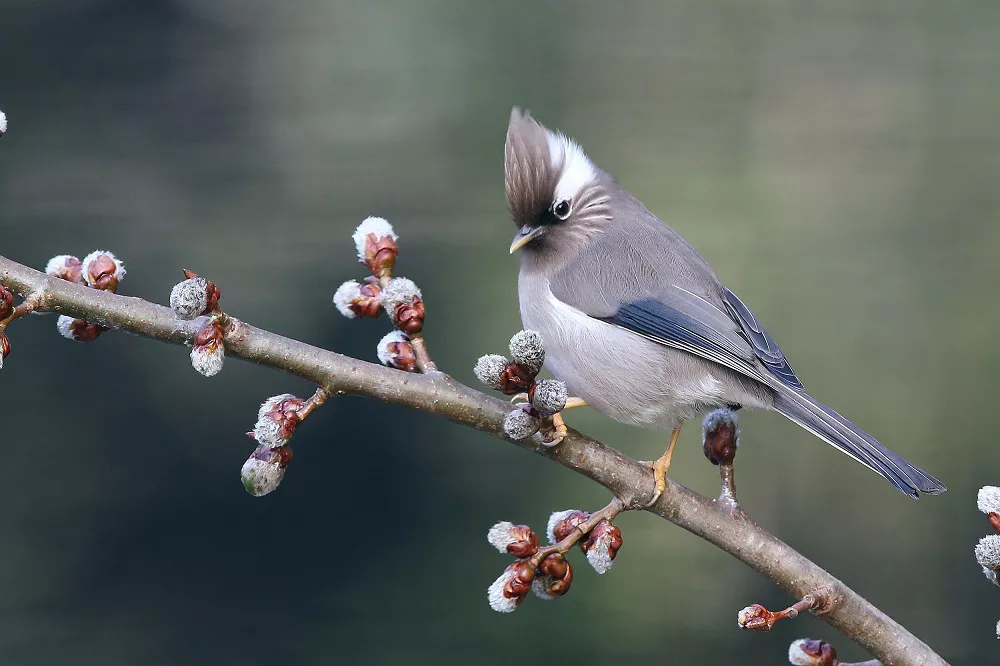The white-collared yuhina is a bird species in the Passerine. Body length 15-18 cm. The top of the head and the feather crest are earth brown, with white eye circles, the eyes are black at first, and the pillow is white, extending to the eyes on both sides, and extending down to the nape and side of the neck, forming a very eye-catching white collar on the neck. The upper body is earthy brown, the flight feathers are black, the outer edge of the outer primary flight feathers is white, the tail is dark brown, and the rachis is white. Chin, throat, dark brown, chest taupe, belly and undertail coverts white.
What does white collared yuhina look like
Male and female feathers are similar. The forehead is dark brown, the top of the head and the erected crest are light chestnut brown or earth brown or dark brown, with bright light-colored feather shafts; the pillow and nape are white, and a wide white eyebrow line extends from the upper back of the eyes to the back. Pillow, blending with the white of the occipital; the eyes are black first, and the eye rims are white; the side of the head and ear feathers are light brown or taupe with dark brown shaft lines. The back, shoulders, waist and tail coverts are earthy brown or light chestnut brown, the tail feathers are dark brown, the inner feathers and feather tips are dark brown, and the feather rachis is white; the small wing feathers and primary coverts are dark brown, and the rest of the wing coverts and back Similar; flight feathers dark brown, outer edge and rachis black, outer primary flight feather tip outer edge and rachis white, inner primary and secondary flight feather rachis white, innermost primary and tertiary flight feathers The color is also the same as the back. The chin and upper throat are dark brown, the lower throat, chest and two flanks are earthy brown or light gray brown, and the abdomen, perianal area and undertail coverts are white.
The iris is chestnut or chestnut brown, the upper mouth is yellowish brown, the lower mouth is yellow, and the legs are yellow.
White collared yuhina habitat
The white collared yuhina mainly inhabits mountainous broad-leaved forests, coniferous and broad-leaved mixed forests, coniferous forests and bamboo forests at an altitude of 1500-3000 meters, and also inhabits secondary forests, artificial forests and forest margins. It is one of the more common birds in broad-leaved forests, coniferous forests, and mixed coniferous-broad-leaved forests.
White collared yuhina living habit
White-collared babblers usually act in pairs or alone during the breeding period, and at other times they form small groups of 3-5 to more than 10 individuals. It often moves and forages among the branches and leaves of the tree canopy, and also descends to young trees or tall shrubs and bamboo bushes or understory grass. During the breeding period, they often stand on the branches of shrubs and sing for a long time, and the calls are loud and changeable.
White collared yuhina diet
The white collared yuhina feeds mainly on insects and plant fruits and seeds. Physical food accounted for 83% of the total feeding frequency, and insects accounted for 61%. Plant foods are mainly Rosaceae fruits, various berries and weed seeds, etc. The insects eaten are mainly Coleoptera insects such as scarab beetle, golden flower beetle, lady beetle and click beetle, followed by Lepidoptera, Hymenoptera, Diptera Pteroptera and Orthoptera insects.
Distribution range of white collared yuhina
The white collared yuhinas are distributed in western China, northeastern Myanmar and northern Vietnam.
Mode of reproduction
The breeding season is mainly from May to August, and a few are as late as September. It usually nests in mountain forests and hillside bushes at an altitude of 1200-2700 meters, and also nests in tea gardens. Nests are mostly placed among low bushes or on shrub branches, 0.2-1.5 meters above the ground. The nest is cup-shaped, the outer layer is mainly moss, the middle layer is composed of dead grass, dead leaves and fine roots, and the inner layer is filled with materials such as palm silk, thin grass stems, grass roots and fibrous roots, and is tied to the branches with fibrous roots. The size of the nest is 9-13 cm in outer diameter, 5-7 cm in inner diameter, 6-12 cm high, and 3.8-7.2 cm deep. Each clutch lays 2-3 eggs, usually 3 eggs. Eggs are white, blue-green, light green or light gray-green, covered with reddish-brown, purple-blue or dark brown spots, the size of the eggs is 21.4 mm × 15.2 mm, and the weight is 2.1 grams.


 Facebook
Facebook  Instagram
Instagram  Youtube
Youtube 